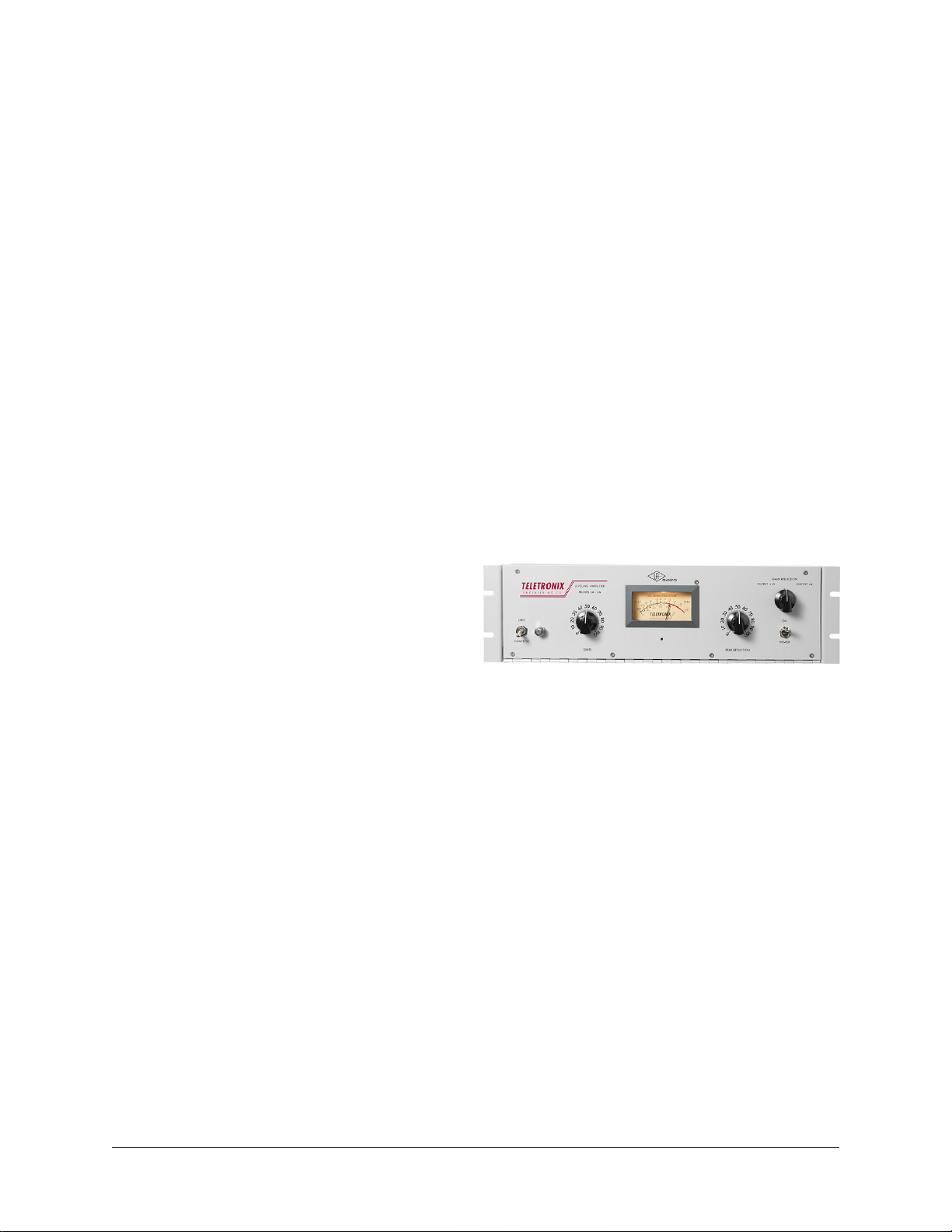Loading ...
Loading ...
Loading ...

Apollo Solo Manual Universal Audio History 260
Classic Compressors
The LA-2A and 1176 compressor/limiters long ago achieved classic status. They’re a
given in almost any studio in the world -- relied upon daily by engineers whose styles
range from rock to rap, classical to country and everything in between. With so many
newer products on the market to choose from, it’s worth looking at the reasons why
these classics remain a necessary part of any professional studio’s outboard equipment
collection.
The basic concept of a compressor/limiter, is of course, relatively simple. It’s a device in
which the gain of a circuit is automatically adjusted using a predetermined ratio that acts
in response to the input signal level. A compressor/limiter “rides gain” like a recording
engineer does by hand with the fader of a console: it keeps the volume up during softer
sections and brings it down when the signal gets louder. The dynamic processing that
occurs at ratios below 10 or 12 to one is generally referred to as compression; above that
it’s known as limiting.
Modern day compressors offer a great degree of programmability and flexibility - older
devices such as the 1176 and the LA-2A are more straightforward in their design.
Perhaps it is this fact that has contributed to their appealing sound and the longevity of
their popularity.
LA-2A
The LA-2A leveling amplifier, a tube unit
with hand wired components and three
simple controls, was introduced in the
mid-1960s. It utilized a system of electro-
luminescent optical gain control that was
quite revolutionary. Gain reduction was
controlled by applying the audio voltage to a luminescent driver amplifier, with a second
matched photoconductive cell used to control the metering section.
With its 0 to 40 dB of gain limiting, a balanced stereo interconnection, flat frequency
response of 0.1 dB from 30-15,000 Hz and a low noise level (better than 70 dB below
plus 10 dBm output), the LA-2A quickly became a studio standard. Originally patented
by Jim Lawrence, it was produced by Teletronix in Pasadena, California, which became
a division of Babcock Electronics Corporation in 1965. In 1967 Babcock’s broadcast
division was acquired by the legendary Bill Putnam’s company, Studio Electronics
Corporation shortly before he changed the company’s name to UREI®. Three different
versions of the LA-2A were produced under the auspices of these different companies
before production was discontinued around 1969.
Loading ...
Loading ...
Loading ...
